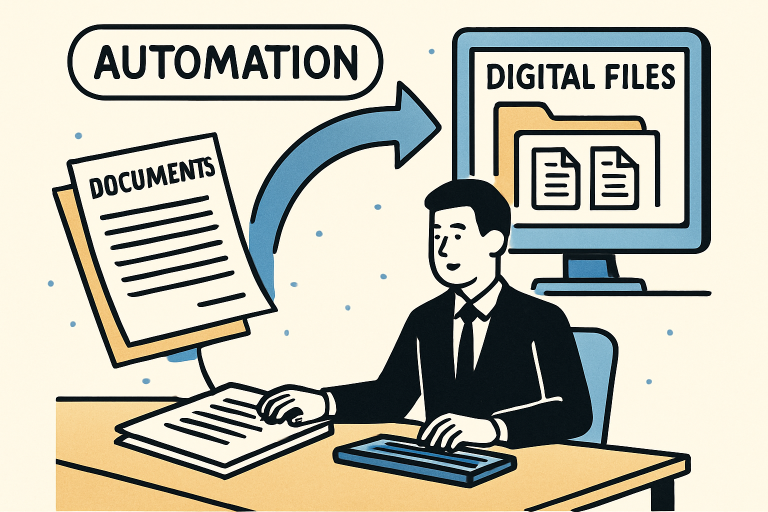Modern businesses must ensure accuracy and efficiency, particularly in document management, as digitalization continues to increase. Manual methods now fall short, prompting companies to adopt smart solutions. Advanced tools help streamline workflows, save time, and reduce errors. In regulated industries, automating document processes is crucial for meeting compliance requirements, mitigating risks, and enhancing tracking, authentication, and secure archiving. By utilizing automation tools and strategies, organizations can maintain their competitiveness.
Understanding Document Automation
Document automation utilizes technology to simplify and standardize the creation, management, and storage of documents. It automates repetitive tasks, such as data entry, form generation, and version tracking, freeing staff from routine paperwork and reducing errors. Incorporating legal entity management software enhances these capabilities by ensuring compliance, improving accuracy, and centralizing governance across documents and entities. Automated document management streamlines processes, ensures compliance, and standardizes communications. Industry leaders rely on automation for remote and hybrid teamwork, reducing manual work and facilitating growth. Features like templates, workflow routing, and central archives replace traditional, labor-intensive methods.

Benefits of Automating Document Workflows
Automation boosts productivity by freeing up employee time and reducing administrative burdens. It enhances accuracy by reducing human errors in manual data entry, ensuring consistent and reliable documents. Automated systems also save costs by reducing overhead expenses associated with document processing, printing, and storage. Advanced platforms also improve regulatory compliance through strict tracking and audit trails.
Key Tools for Document Automation
Document automation involves deploying technologies tailored to an organization’s specific needs and requirements. Key tools include Intelligent Document Processing (IDP), which uses artificial intelligence and machine learning to extract and organize data from business documents, Electronic Signature Software, which accelerates contract cycles and enhances security, and Content Collaboration Platforms, which enable simultaneous editing, commenting, and document sharing for remote and distributed teams, promoting transparency and workflow visibility.
Implementing Document Automation in Your Business
To automate document processes, audit existing processes for inefficiencies and identify opportunities for improvement. Select automation tools that align with business requirements, ensure scalability, meet compliance standards, and facilitate seamless infrastructure integration. Provide comprehensive training for employees to leverage new platforms fully. Continuously monitor and optimize automated workflows to identify bottlenecks and fine-tune processes based on evolving business needs.
Overcoming Common Challenges
Despite the clear benefits, organizations may encounter challenges, including employee hesitation, technical integration issues with legacy systems, and concerns about data security. To overcome these hurdles, leadership should emphasize the value of automation, involve stakeholders early in the decision-making process, and select solutions with robust security credentials.
Investing in robust cybersecurity protocols is especially important, as digital document automation inevitably increases your data footprint. Adopting best practices in encryption, access controls, and privacy guidelines can help mitigate potential risks associated with sensitive business information.
Future Trends in Document Automation
The next generation of document automation advances through hyperautomation and AI, with solutions that adapt by learning from data and adjusting workflows in real-time. Machine learning improves data extraction and process orchestration, making full automation accessible for all business sizes. Cloud platforms and integrations enable unified business functions and better collaboration. These innovations aim to streamline operations and create new value in a digital economy.
Conclusion
The integration of document automation is a transformative step for organizations seeking to achieve greater efficiency, accuracy, and regulatory compliance. By clearly understanding the advantages, adopting the right suite of tools, and embracing thoughtful change management, businesses can streamline document creation and redirect their energy toward their strategic objectives.






